Dogwoods, Cornus spp., are shrubs, subshrubs, and understory trees in the Cornaceae family of flowering plants.
They are native to Asia, Europe, and North America. And there are varieties suitable for cultivation in USDA Hardiness Zones ranging from 2 to 9.
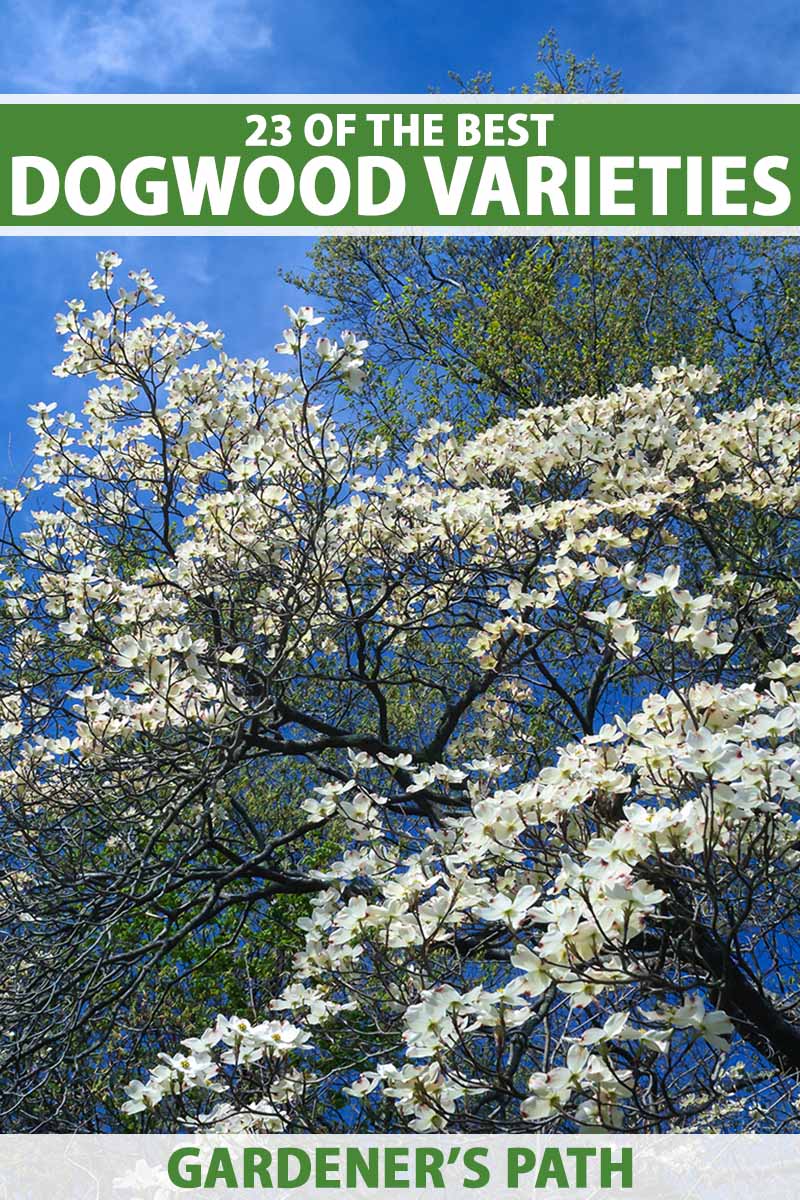
We link to vendors to help you find relevant products. If you buy from one of our links, we may earn a commission.
Tolerant of a variety of well-draining soils, dogwoods flourish in full sun to part shade.
Spring blossoms, lush summer foliage, berry-like drupes, autumn color, and striking, often brightly hued branches add four-season interest to the home landscape.
For more details on how to care for dogwood trees, be sure to check out our growing guide.
This guide offers 23 exciting varieties to whet your appetite for some of the most beautiful trees and woody shrubs available.
Here’s the lineup:
Let’s meet these exciting varieties! Take note of sizes, zones, and colors to match them to your landscaping needs.
Please be advised that the ornamental drupes produced by these plants are for wildlife only and not for human consumption, except as noted.
1. Appalachian Joy
C. florida ‘Appalachian Joy’ is an early-blooming white-flowering tree for Zones 5 to 9.
This cultivated variety features “supernumerary” showy, white, rounded, petal-like bracts, or more than the usual four per flower.
The branching is horizontal, tiered, and upturned at the tips, typical of flowering C. florida and its cultivars.
Dark green leaves bronze to shades of burgundy, orange, purple, red, and yellow in the fall. Bright red berry-like drupes attract songbirds.
Bred for hardiness and mildew resistance, mature specimens measure 15 to 20 feet tall and wide.
‘Appalachian Joy’ is available from Nature Hills Nursery.
Learn more about how to grow flowering dogwood in our guide.
2. Arctic Fire
Arctic Fire®, C. sericea (syn. C. stolonifera) ‘Farrow,’ is a cultivated variety of red twig, aka red osier dogwood, a shrub for Zones 3 to 7.
Young branches of this variety are bright red, making them stand out boldly in the barren winter landscape, especially when it’s blanketed with snow.
Prune regularly to promote fresh new red growth.
Clusters of white, star-like spring flowers and green foliage turn to white berries and red leaves in the fall.
Mature dimensions are three feet tall and wide. These shrubs tolerate wet soil.
Arctic Fire®is available from Nature Hills Nursery.
Learn more about how to grow red twig dogwoods in our guide.
3. Cherokee Brave
Cherokee Brave, aka C. florida ‘Comco No. 1,’ is an exceptionally cold-hardy showy, pink-flowering cultivar that tolerates winter’s worst with ease in Zones 5 to 9.
Spring blossoms are bright pink, made even more striking by white centers.
Red drupes and maroon foliage provide an eye-catching autumn display. Gray, horizontal branches are graceful winter silhouettes against winter white.
Substantial heights of 25 to 30 feet and widths of 20 to 30 feet command attention in the home landscape. This cultivar exhibits above-average disease, drought, and pest tolerance.
Cherokee Brave is available from Fast Growing Trees.
4. Cornelian Cherry
Cornelian cherry, C. mas, is a tree species suited to cultivation in Zones 4 to 8, noteworthy for having edible fruits that are tart and best suited for use in preserves and syrups.
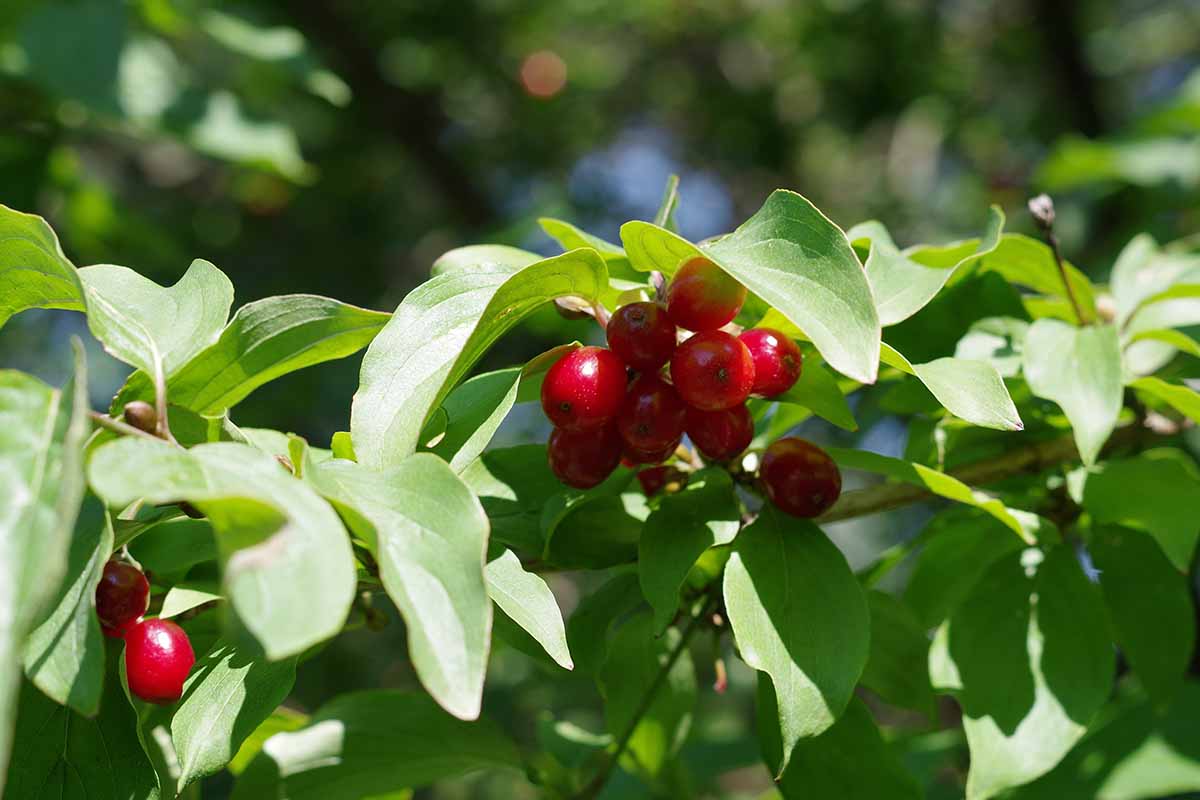
This variety has small yellow blossoms. The green foliage does not turn in the fall, instead remaining green for a holly-like contrast with the bright red fruits.
Mature heights are 15 to 25 feet with a spread of 15 to 20 feet. Older trees display gray, exfoliating bark for rich texture and winter interest.
This species tolerates clay soil.
Find tips on growing cornelian cherry trees here.
5. Dwarf Cornel
Known by several common names, including dwarf cornel, bunchberry, and creeping dogwood, C. canadensis is a ground-covering subshrub that readily naturalizes in Zones 2 to 6.

Not intended to be walked on, this decorative low-profile species has star-like blooms with showy white, pointed, petal-like bracts perched atop lush green foliage.
Red and purple fall foliage and red drupes make an attractive addition to autumn plantings.
Mature dimensions are four to nine inches tall and six to 10 inches wide. These plants grow best in partial shade.
See our guide to growing dwarf cornel dogwoods for more details. (coming soon!)
6. Elegantissima
C. alba ‘Elegantissima’ is a shrub for Zones 3 to 8. It is a cultivated variety of the Siberian or Tatarian species and has the classic bright red stems one would expect, but that’s not all!
The foliage is variegated and consists of green leaves with cream margins. Clusters of small, fragrant white blossoms are an elegant complement.
In autumn, white drupes and gold, pink, and red leaves contribute their appeal to the seasonal landscape.
Expect mature heights of nine to 10 feet and a spread of eight to 10 feet.
‘Elegantissima’ is available from Nature Hills Nursery.
See our guide to growing Tatarian dogwoods for more details. (coming soon!)
7. Elizabeth Lustgarten
C. kousa ‘Elizabeth Lustgarten’ is a cultivated variety of the Asian kousa dogwood for Zones 5 to 9.
Kousas bloom late in the spring, are exceptionally hardy, and have showy petal-like bracts that are more pointed than rounded, making them appear almost star-like.
This cultivated variety is a weeping tree with artfully cascading branches and white flowers.
The green foliage shades to rich orange, red, and yellow tones in the fall. Edible bumpy red drupes complement the exceptional display.
Expect mature dimensions of 12 to 15 feet tall and 15 to 18 feet wide.
‘Elizabeth Lustgarten’ is available from Nature Hills.
Learn more about kousa dogwood in our growing guide.
8. Firebird
Bright reddish-pink blossoms precede the emergence of the tri-color green, pink, and white foliage of Firebird™, C. florida ‘Fircomz,’ a tree for Zones 5 to 9.
When fall is in the air, red drupes add to the festive display as the colorful foliage deepens to purple hues.
Mature dimensions are 15 to 18 feet tall and wide.
Firebird™ is available from Nature Hills Nursery.
9. Gray Twig
Gray twig, aka gray or gray-stemmed dogwood, C. racemosa, formerly C. foemina subsp. racemosa, is a native shrub for Zones 2 to 8.
It has red emergent foliage that shades to gray-green in summer and deep red in autumn.
The stems are gray rather than the usual brown.
Clusters of small, starry white flowers give way to white drupes in the fall. The pedicels or fruit stems are an eye-catching bright red.
This species prefers moist soil but tolerates dry conditions well. Mature dimensions are 10 to 15 feet tall and wide.
Gray twig is available from Nature Hills Nursery.
10. Isanti
C. sericea ‘Isanti’ is a red osier cultivar appreciated for exceptional cold hardiness and a compact form. It’s suited to cultivation in Zones 3 to 8.
Spring brings clusters of small, star-like white blossoms. The fall display is a bold combination of white drupes and deep red foliage.
In winter, bare red stems continue to capture the attention of passersby.
This cultivar is especially at home in wet soil and grows to a height and width of five to six feet.
‘Isanti’ is available from Nature Hills Nursery in #3 and #5 containers, and bare roots.
11. Ivory Halo
Ivory Halo, C. alba ‘Bailhalo,’ is a red twig Tatarian cultivar with variegated green leaves outlined in cream margins. It grows in Zones 3 to 7.
Star-shaped, white flowers cluster atop the striking foliage in spring.
Fall brings white drupes and leaves that bronze to burgundy, purple, and red hues. And in winter, the classic red stems catch the eye across snowy landscapes.
Mature dimensions are five to six feet tall and wide.
Ivory Halo is available from Nature Hills Nursery.
12. Muskingum
Muskingum®, C. racemosa ‘Muszam,’ is a cultivated variety of native gray dogwood with a compact, ground-covering stature. It grows in Zones 4 to 7.
This shrub’s emergent spring foliage is red. It turns gray-green by summer. Starlike, white blossoms appear in clusters, and the bark is gray instead of brown.
By fall, the foliage shades to deep red, accented by white drupes.
Mature dimensions are two to three feet tall and four to five feet wide.
Muskingum® is available from Nature Hills Nursery in #3 containers.
13. Neon Burst
Neon Burst™, C. alba ‘Byboughen,’ is a shrub for Zones 2 to 7 with vivid yellow summer foliage.
It’s a cultivated variety of the Tatarian or Siberian dogwood known for its bright red stems. To keep them looking their best, prune out the oldest and showcase the youngest.
Clusters of small white blossoms in spring and white drupes in fall are less showy, as the foliage is the star of this cultivar’s show.
From springtime yellow, it bronzes to shades of burgundy, gold, orange, purple, and red in the fall.
Expect dimensions of four to five feet tall and wide.
Neon Burst™ is available from Nature Hills Nursery in #3 containers.
14. Pacific
The Pacific dogwood, C. nuttallii, is also known as mountain or Canadian dogwood.
It’s a western native species suited to cultivation in Zones 7 to 9 that offers what flowering dogwood (C. florida) does for the country’s eastern side.
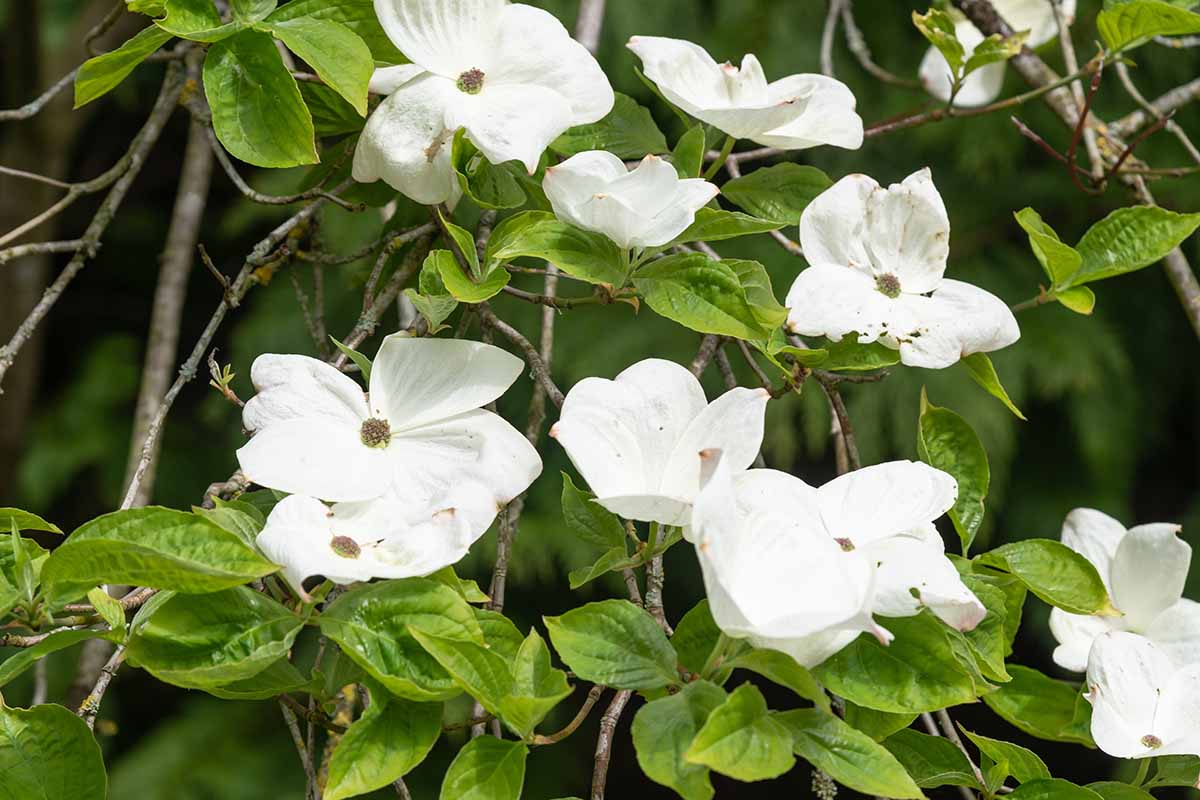
This species grows as a tree with horizontal, tiered branches and upturned tips.
The spring foliage is green. Showy flowers have white petal-like bracts and provide the classic layered look of an eastern C. florida species or cultivated variety.
Bright red or orange drupes complement the fall foliage’s orange, red, and yellow tones.
This species tolerates black walnut juglone toxicity and clay soil. Mature dimensions are 15 to 40 feet tall with a spread of 10 to 25 feet.
15. Pagoda
The native pagoda dogwood, C. alternifolia, grows as a shrub or tree in Zones 4 to 8.
It has the classic horizontal, tiered branches with upturned tips we’ve come to identify with native varieties.
Clusters of small, starry white blossoms adorn the branches atop the green foliage in spring.
Unlike most dogwoods, which have leaves opposite one another, pagoda has alternating leaves, hence the Latin species name, “alternifolia.”
Toward season’s end, bluish-black drupes borne on red pedicels perch attractively on reddish-purple autumn foliage.
This species is tolerant to juglone. Mature dimensions are 15 to 20 feet tall with a spread of 20 to 25 feet wide.
Pagoda dogwood is available from Nature Hills Nursery.
See our guide to growing pagoda dogwoods for more details.
16. Red Osier
Native red osier, C. sericea, formerly C. stolonifera, is a stunning red-stemmed shrub from which many cultivars are derived. It grows in Zones 2 to 8.
In the spring, clusters of small, starlike, white blossoms and green leaves decorate the landscape.
Fall’s chill changes the foliage to deep reds, oranges, and purples. White drupes punctuate the seasonal hues.
And in winter, the young stems are brilliant red and create a sensation in a snowy landscape. Trimming out older branches to promote new growth ensures a colorful display.
Tolerant of wet conditions and clay soil, this species grows to heights of eight to 12 feet and widths of eight to 10 feet.
Red osier dogwood is available from Nature Hills Nursery.
17. Roughleaf
Roughleaf dogwood, C. drummondii, is a native tree for Zones 5 to 8 with rough textured gray-brown bark that shows exceptionally well in snowy winter scenes.
In spring, it boasts clusters of small, starry white flowers and green leaves. Fall deepens the foliage to burgundy, purple, and red. White drupes accent the rich hues.
This species tolerates wet soil. Expect mature dimensions of eight to 15 feet tall and wide.
Roughleaf dogwood is available from Audubon via Nature Hills.
18. Satomi
C. kousa ‘Satomi’ is a cultivated variety of Asian kousa dogwood with outstanding features for every season. It grows in Zones 5 to 9.
Late spring flowers blush with showy pink, pointed bracts atop lush dark green foliage, adorning the graceful, horizontal branches with layers of cheerful color.
This species has excellent disease resistance and offers an alternative to native flowering dogwood in areas where anthracnose is prevalent.
In autumn, edible but not very palatable bumpy red drupes in combination with red foliage create a vivid display.
Mature dimensions are 15 to 30 feet tall and wide.
‘Satomi’ is available from Nature Hills.
19. Scarlet Fire
Scarlet Fire®, aka C. kousa ‘Rutpink,’ is a kousa cultivar for Zones 5 to 9 developed at Rutgers University. Its richly saturated spring and fall color is fabulous.
The late spring display consists of pointed bracts in a show-stopping shade of fuchsia-pink.
When the foliage sprouts, it has a purplish cast before maturing to dark green.
Pinkish-red bumpy drupes follow the blossoms, along with red and orange autumn leaves. And in winter, the grayish-brown exfoliating bark continues to command attention.
Exceptionally tolerant of cold, heat, pests, and disease, this cultivar is a stand-out specimen that achieves mature dimensions of 20 to 25 feet tall and 15 to 20 feet wide.
Scarlet Fire® is available from Nature Hills.
20. Silky
Silky dogwood, C. amomum, is a songbird favorite with inky blue berries and red fall foliage that’s suited to cultivation in Zones 4 to 8.
Small flowers are star-like and grouped in clusters. Spring and summer foliage is a lush green.
This species tolerates wet soil. Without pruning, the lower branches readily root to form dense thickets for wildlife to inhabit.
Expect a mature height of six to eight feet and a spread of six to nine feet.
Native silky dogwood is available from Audubon via Nature Hills.
21. Swamp
A subspecies of silky dogwood, native swamp dogwood (C. amomum subsp. obliqua) is a tree or shrub for Zones 4 to 8.
New spring shoots are purplish and mature to green. There are clusters of starry white flowers in springtime and inky blue drupes at season’s end.
This plant features no distinctive fall color and tolerates wet soil. Mature dimensions are six to 10 feet tall and five to eight feet wide.
Native swamp dogwood is available from Audubon via Nature Hills.
22. Venus
Venus® (Cornus ‘Kn30 8’) is a remarkable cultivated variety for Zones 6 to 9. It’s a hybrid of three cultivars: C. kousa ’Chinensis’ x C. nuttalii ’Goldspot’ x C. kousa ’Rosea.’

This cultivar is part of the Jersey Star® series produced at Rutgers University. It is exceptionally hardy, highly resistant to anthracnose and powdery mildew, and drought tolerant.
This robust shrub or tree has showy, white flowers (bracts) six inches across, lush dark green foliage, and tiered, horizontal branching for a spectacular late spring display.
Drupes are kousa-style, red, round, and bumpy.
This variety reaches a mature height of 14 to 18 feet, and a width of 18 to 24 feet.
23. Yellow Twig
Yellow or golden twig, C. sericea ‘Flaviramea,’ is a cultivated variety of red osier with bright yellow stems instead of red ones that delivers year-round ornamental value in Zones 3 to 8.
Pruning out old branches helps to maintain optimal color.
In the spring, enjoy clusters of starry, white blossoms against a backdrop of dark green leaves. By fall, white berries appear, and the foliage deepens to burgundy, purple, and red tones.
These shrubs tolerate clay and wet soil. Mature heights are six to eight feet tall with an equal spread.
Yellow twig is available from Nature Hills Nursery.
Decorative and Dependable Dogwoods
Whether you prefer trees, shrubs, or subshrubs, you’re sure to find new favorites in this list of 23 best dogwood varieties.

For best results, choose species and cultivars suited to your growing zone.
Plant them in locations with full sun to part shade and well-draining soil, and allow ample room to achieve mature dimensions without overcrowding.
In addition to their decorative qualities, like lighting up springtime gardens with blossoms, summer with lush leaves, fall with drupes and bronzed foliage, and winter with striking bare stems, dogwoods are a dependable source of food and shelter for wildlife.
Do you grow dogwoods? Which are your favorites? Share your answers in the comments section below.
If you enjoyed this round-up of dogwoods and want to read more about landscape trees, we recommend the following:



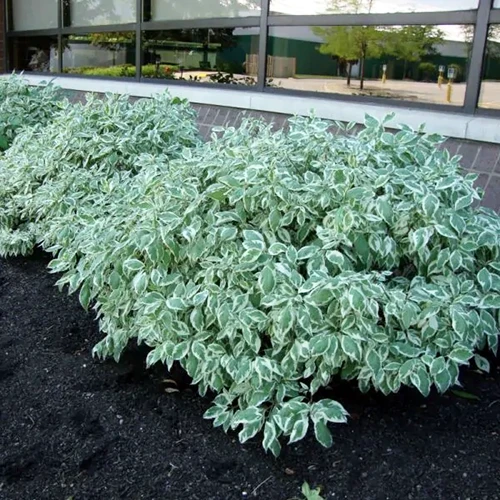
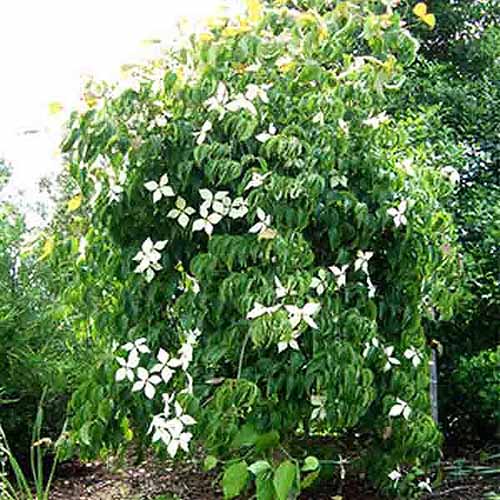
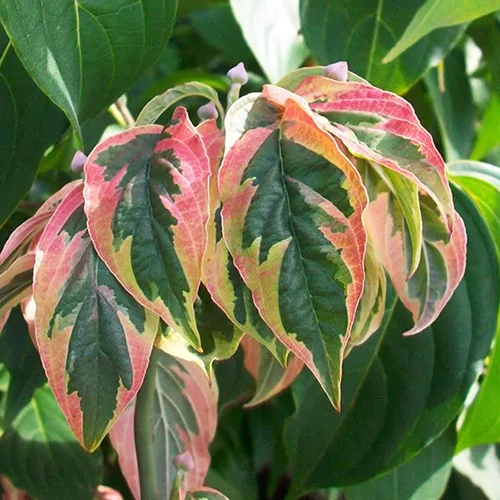

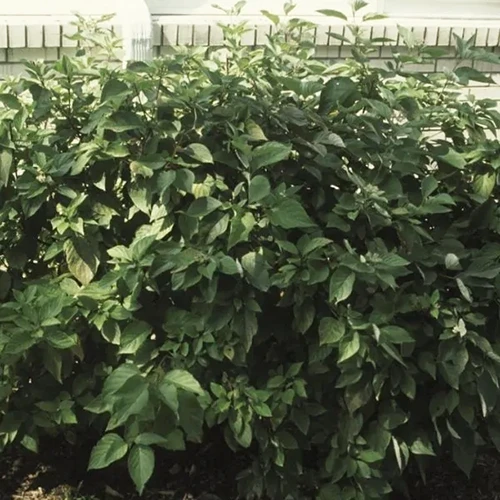
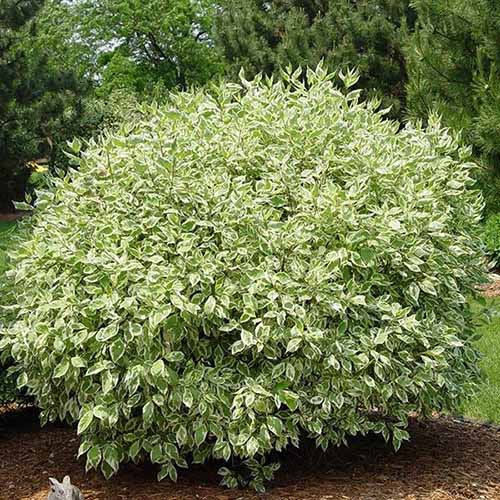
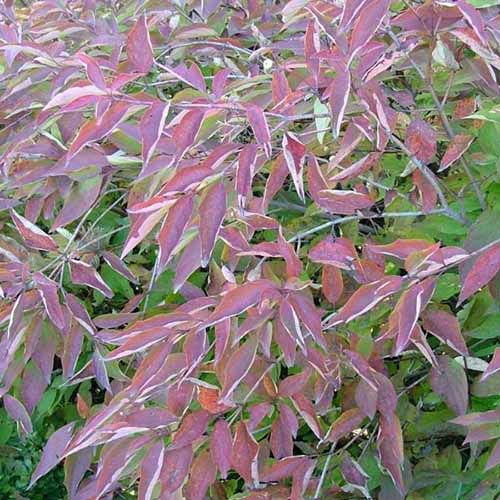

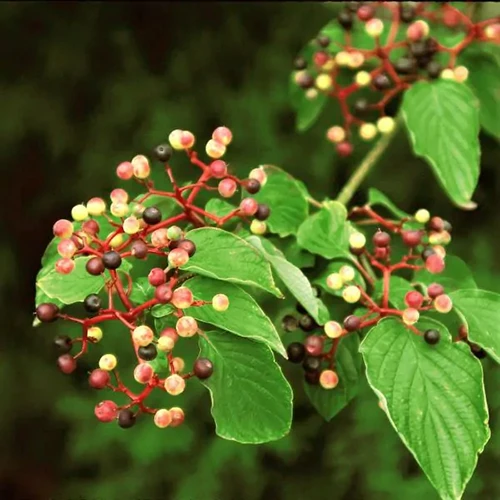
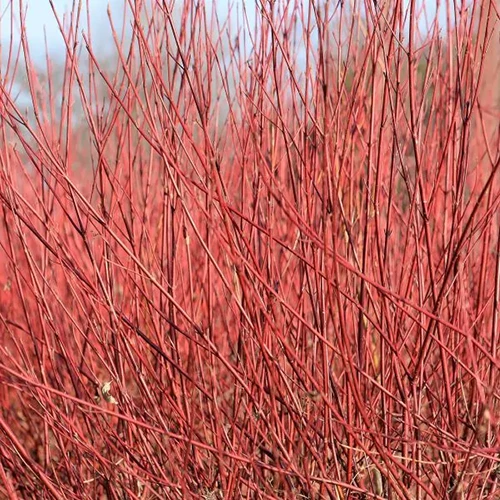
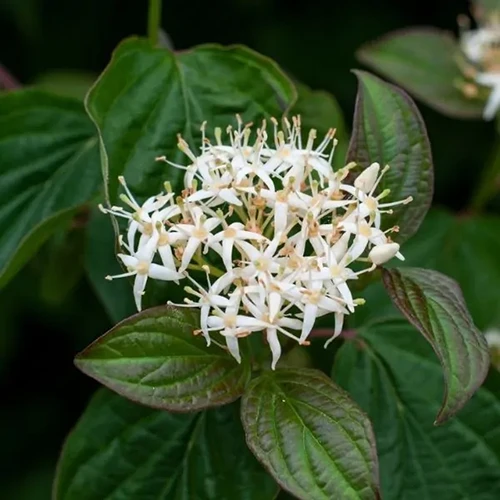
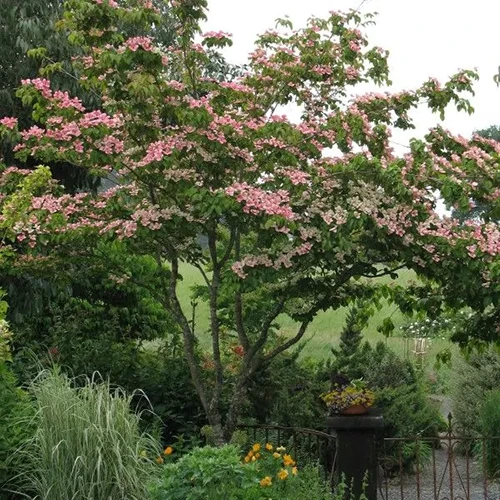
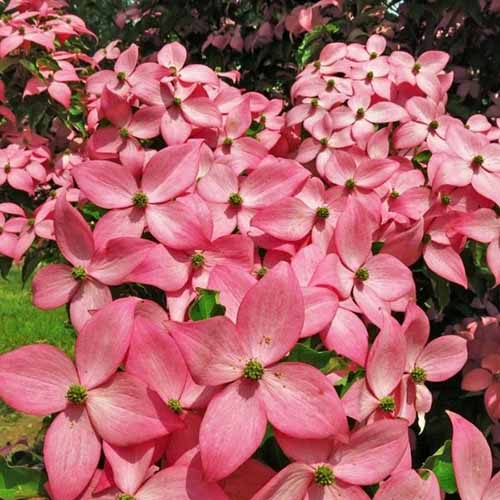
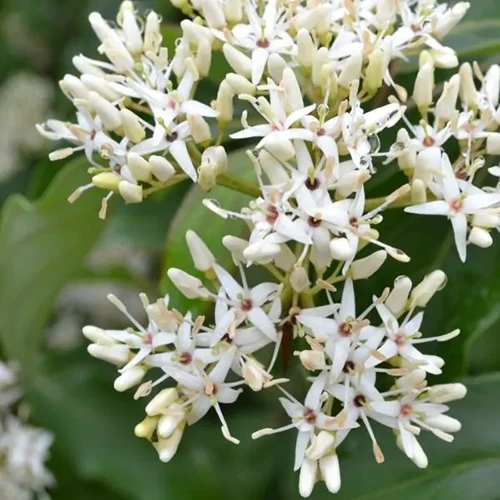
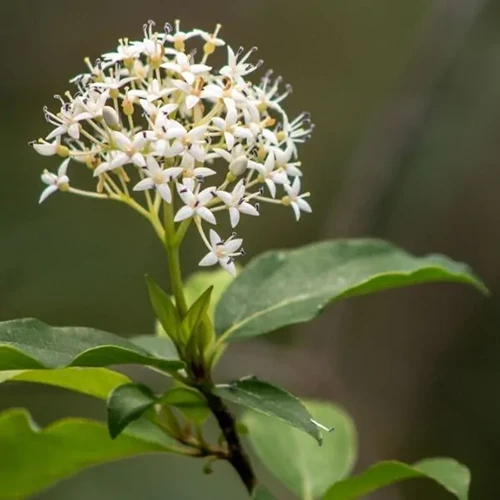
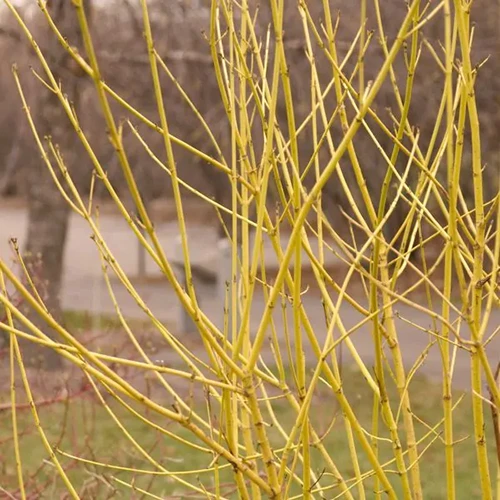
Great article! We have the Muskingum gray dogwood, and they are gentle 3′ x 4’+ mounds in our front bed. Birds love them and their fruits! They have a gently weeping form, as well, and drop some limbs around their base for a gentle, broody hen look. Some of the outer base branches root, and I may dig them up and add the shrub to other places. I guess most native shrubs sucker and form thickets. With Muskingum, that process would be slow. So they don’t easily get out of control but do offer the option of making you some… Read more »
Hi richard –
Thank you! We’re glad you liked it.
Muskingum gray dogwood, Cornus racemosa ‘Muszam’ is lovely. I especially like the white berries and deep red fall foliage. It’s a great shrub along roadways because it tolerates pollution well.